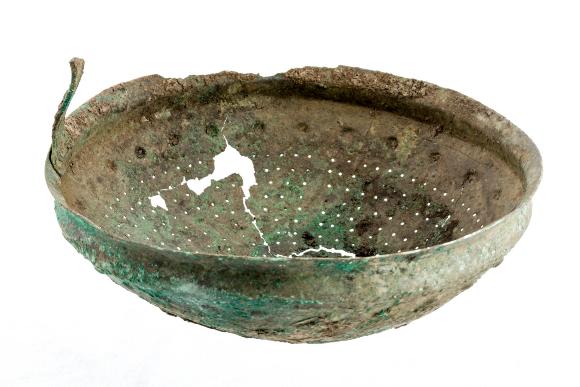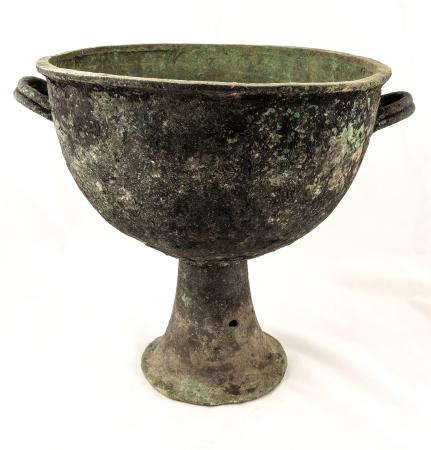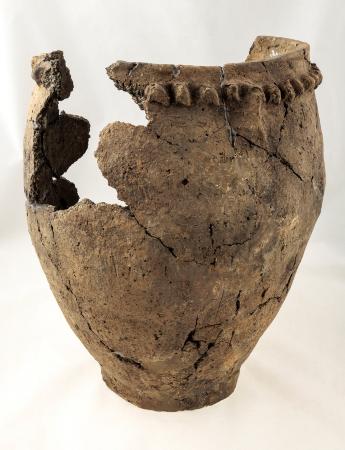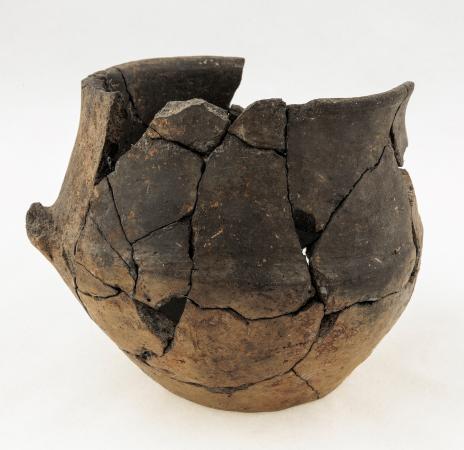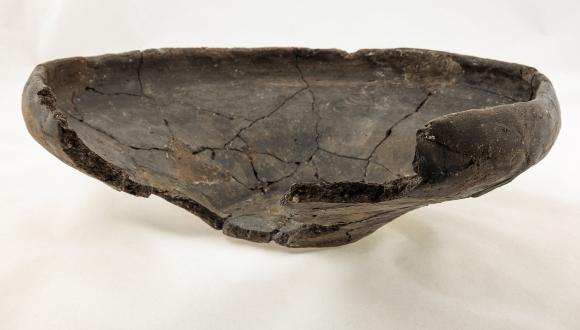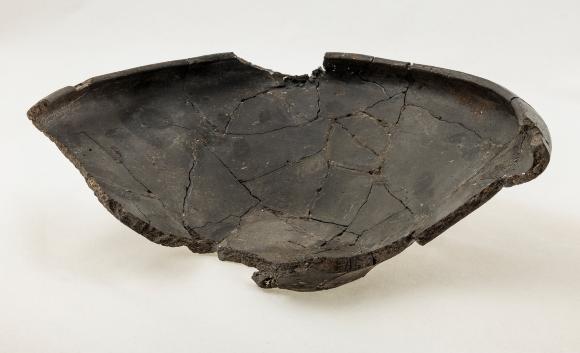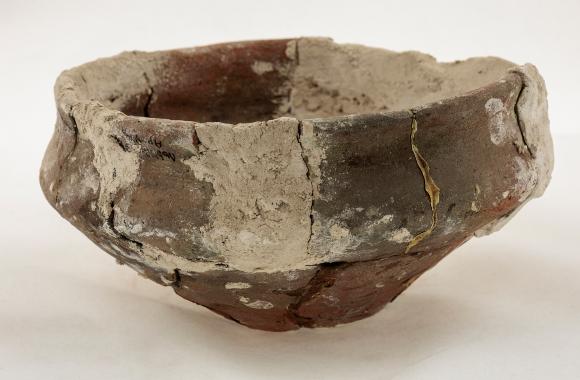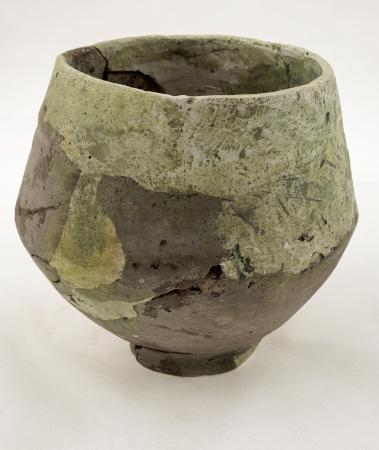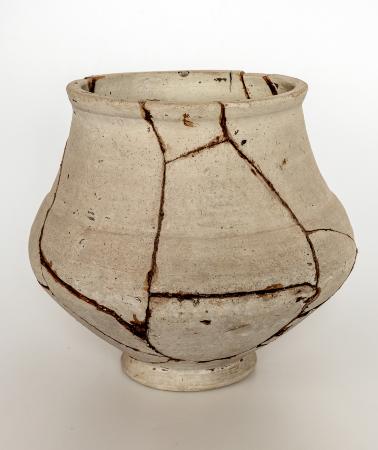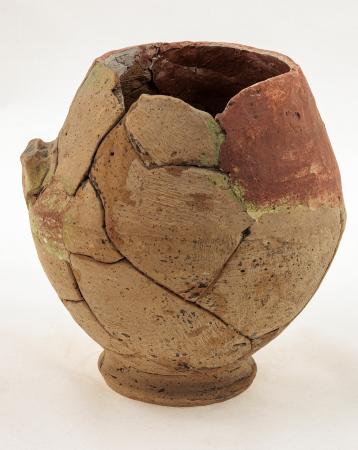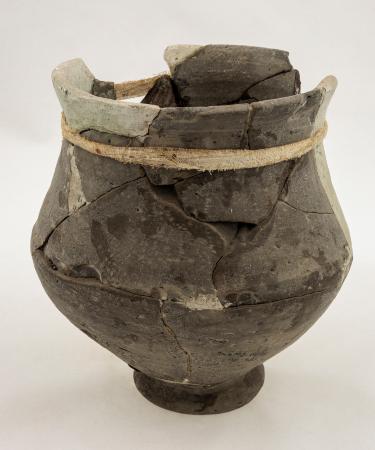Binocular vessel
- Inventory number:
- Ар-141
- Creation Date:
- 4th - 3rd millennia BC
- Place of Creation:
- Ukraine, Kyiv region
- Provenance:
- Lviv Historical Museum
- Technique:
- molding
- Size:
- 18.5 x 22 cm
- Material:
- clay
- Type of object:
- Vessel
- Subject:
- Cucuteni–Trypillia culture
Only half of the “binocular” is preserved, shaped like an hourglass. In the middle part, there is a connecting bridge that features concentric circles on one side and a cross—symbolizing the sun—on the other side. The upper part retains a projection from the connecting bridge. The fragment shows four groups of embossed lines that form concentric circles around the vessel. The symbols depicted on such vessels can be interpreted as magical formulas, but the decorative-aesthetic concept should not be completely disregarded. Researchers interpret the purpose of binocular-shaped vessels through the idea of duplication, primarily in relation to the harvest. Archaeologist Vikentiy Khvoyka discovered the first Cucuteni-Trypillian settlement in present-day Ukraine in 1893–1894 on 55 Kyrylivska Street in Kyiv. However, the culture was named after the village of Trypillia of Kyiv Region. The area of its spread in Eastern Europe ranged from the Dnipro River to the Carpathians, from Polissia to the Black Sea and the Balkan Peninsula. The settlements of the Trypillians covered a significant area and are referred to as proto-cities. One of the distinguishing features of this culture was the burning of their homes, which could have been caused by soil depletion, a lack of resources for livestock grazing, or perhaps it had a ritual significance. The Trypillians were primarily engaged in cultivation, grain farming, fishing, pottery, weaving, metallurgy (including copper processing), and animal husbandry.


